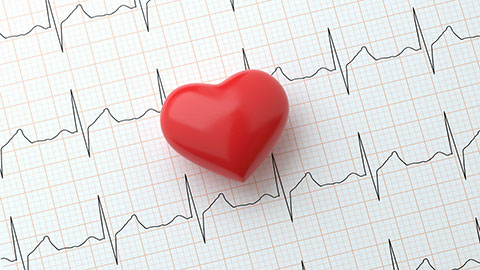
A reentry arrhythmia is a rhythm anomaly in which electrical impulses in your heart deviate from their typical course and form a closed-loop circuit. These arrhythmias are frequently curable with treatment.
The electrical impulses that maintain your heart beating in a constant, predictable rhythm travel the same path thousands of times every minute throughout the heart. An arrhythmia is an interruption in the pattern. Arrhythmias are conditions that cause the heart to beat abnormally rapidly or slowly or in a chaotic, irregular pattern.
A reentry arrhythmia occurs when electrical impulses deviate from their normal route and return to the tissue that generated them, producing a closed-loop circuit. When a closed-loop circuit disrupts the natural flow of electrical impulses in the heart, it can result in distressing symptoms and health issues.
What are the different types of reentry arrhythmia?
The sort of reentry arrhythmia that occurs is determined by the location of the reentry circuit. Among the more common instances are:
- atrial fibrillation (AFib)
- atrial flutter
- atrioventricular nodal reentrant tachycardia (AVNRT)
- atrioventricular reciprocating tachycardia (AVRT)
- ventricular tachycardia
AVNRT is the most prevalent type of reentrant supraventricular tachycardia, and it can cause a heart rate of more than 100 beats per minute to be sustained.
AVNRT bouts can come and go, although they are usually triggered by physical exertion.
What are the symptoms of reentry arrhythmia?
There may be no indications of reentry arrhythmia in very weak cases. The arrhythmia could be identified through an unrelated medical test involving an electrocardiogram (EKG), which analyzes the heart’s electrical activity.
Symptoms:
- chest pain, pressure, or discomfort
- fatigue
- heart palpitations or the feeling that your heart is skipping beats
- lightheadedness or dizziness
- rapid or racing heartbeat
- sweating
While a particularly rapid heart rate is acceptable following an exercise or other physical exertion, your heart rate should quickly return to normal with rest. An arrhythmia causes an unusually high heart rate that does not go away with rest after physical exercise.
When to seek immediate medical attention
Seek immediate medical assistance if you have chest pain, pressure, or shortness of breath (without physical activity). These are signs of a heart attack.
Similarly, if you think you’re going to pass out, contact 911 or have someone nearby phone 911 or local emergency services. These symptoms may not constitute medical emergencies but should always be taken seriously.
How is reentry arrhythmia treated?
Reentry arrhythmia treatment is determined by its kind and location.
- Blood thinners: Depending on the CHA2DS2-VASc score, AFib, whether persistent or intermittent, should be treated with anticoagulant drugs (blood thinners). Blood thinners reduce the likelihood of clotting and stroke.
- Vagal maneuvers: A person with supraventricular tachycardia (an unusually high heart rate that originates right above the ventricles) may be taught vagal movements, which slow down the heartbeats and assist the heart in resuming normal electrical activity.
- Ablation: The purpose of reentry arrhythmia treatment is often to terminate the reentry circuit to restore constant and healthy electrical activity throughout the heart. This is frequently accomplished using a treatment known as catheter ablation, which uses radiofrequency radiation or cold energy (cryoablation) to remove a small amount of tissue.
- Antiarrhythmic medications, like adenosine, can be used to treat some reentry arrhythmias. According to a 2020 study, adenosine, which has been used for decades to treat various types of tachycardia, can aid in detecting incomplete ablation treatments.
- Cardioversion therapy is the use of electrical impulses given from outside the chest to “shock” a heart back into a normal, healthy rhythm.
Regardless of the treatment or treatments utilized, anyone suffering from reentry arrhythmia should strive to live a heart-healthy lifestyle. This includes regular exercise as prescribed by a medical team, as well as a well-balanced diet low in sodium and processed foods.
